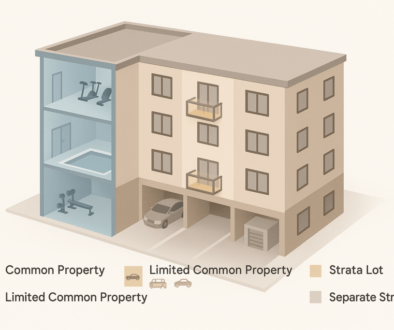Don’t Overlook This Key Strata Document
When buyers look through a strata document package, their eyes naturally go to the minutes, the depreciation report, and maybe the bylaws. But there’s one key document that often flies under the radar: the Insurance Certificate. It’s not flashy, it’s not long—but it’s incredibly important. Especially in today’s market, where rising deductibles, tighter insurance conditions, and poor decision-making by some strata councils can leave owners vulnerable to unexpected costs.
Let’s start with what the Insurance Certificate actually is. This document outlines what the building’s master insurance policy covers. Typically, that includes the structure itself, common property, and sometimes original fixtures in each unit. It also lists critical details like policy limits, exclusions, renewal dates, and—most importantly—deductible amounts.
Now here’s where things get tricky: Some strata councils, due to years of underfunding their contingency reserves or avoiding unpopular special levies, lean heavily on insurance to cover repairs or claims that should ideally be handled through proper maintenance planning. In other words, instead of staying ahead of problems, they treat the building’s insurance as a safety net for deferred upkeep or avoidable damage.
This might work—for a while. But eventually, a pattern of frequent claims can cause premiums to skyrocket or force the insurer to impose unreasonably high deductibles. In some cases, deductibles for common claims like water damage have climbed as high as $100,000 or more. That’s not a typo. If a unit owner is found responsible for a leak that affects common property, they could be personally liable for that deductible—even if the damage is technically “covered” under the building’s policy.
That’s why reviewing the Insurance Certificate is about more than just checking a box. It’s a financial reality check. It tells you how much risk you, as a buyer, might be taking on.
Here’s what to look for:
High Deductibles:
If water, fire, or sewer backup deductibles are excessive, it may indicate a history of claims or a policy under strain. Ask why the deductibles are that high. Was it due to repeated incidents? Or does the building have systemic issues like aging plumbing that hasn’t been addressed?Policy Gaps or Exclusions:
Not every policy is the same. Some buildings may have exclusions that could leave owners exposed. Review these carefully, and talk to your personal insurance provider to understand how your own condo policy (typically “unit owner insurance”) should bridge any gaps.Short-Term or Unstable Policies:
If the policy only covers six months or is with a lesser-known provider, that might be a sign the strata struggled to secure coverage. That’s a red flag worth following up on.Strata’s Attitude Toward Maintenance and Claims:
It’s not just about what’s on the certificate. Pair it with what you read in the minutes. If a strata regularly defers maintenance or pushes for insurance to handle everything, that’s not sustainable. Insurance is there for accidents—not as a backup plan for avoidable issues.
In British Columbia, where we’ve seen both insurance premiums and claim-related deductibles increase sharply over the past few years, this kind of due diligence is no longer optional—it’s essential. Mismanagement doesn’t always look like negligence. Sometimes it looks like avoiding tough financial decisions, pushing repairs down the road, or hoping insurance will cover what planning didn’t.
So for buyers: Don’t overlook the Insurance Certificate. It’s short, but it says a lot. Ask questions, dig into the details, and pair it with a healthy understanding of how the strata council manages risk.
Because in strata living, you’re not just buying your unit—you’re buying into how the entire building is managed and maintained.





